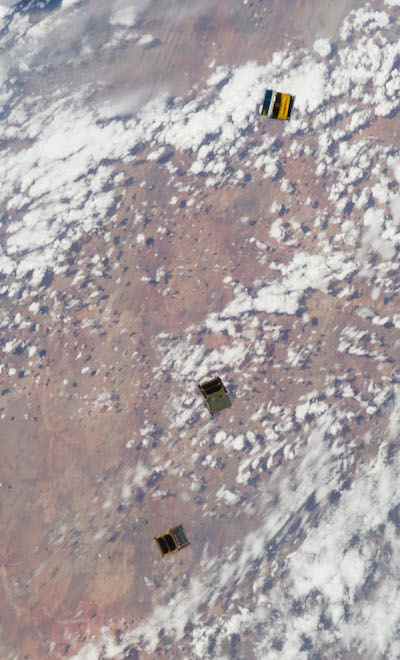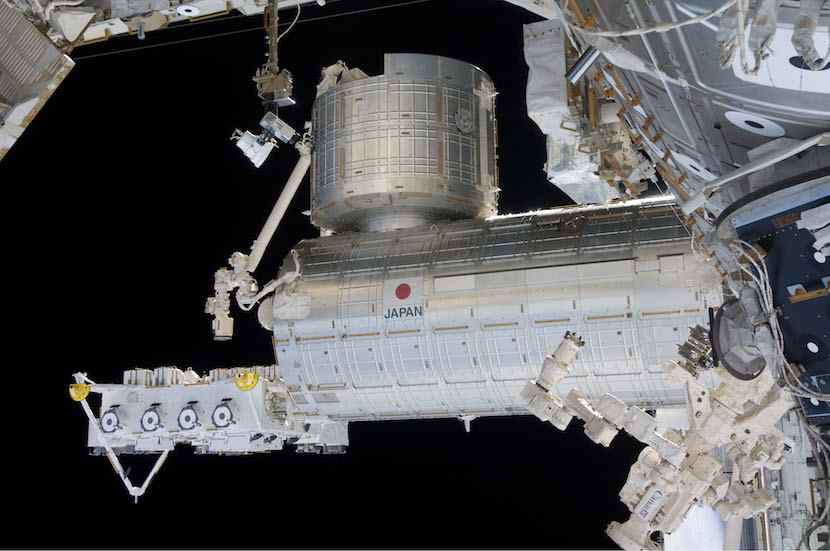ArduSat
 ArduSat is an open source, Arduino based Nanosatellite, based on the CubeSat standard. It contains a set of Arduino boards and sensors. The general public will be allowed to use these Arduinos and sensors for their own creative purposes while they are in space. ArduSat is created by Nanosatisfi LLC, an aerospace company which in the word of Phil Plait has “the goal to democratize access to space” and was founded by 4 graduate students from the International Space University in 2012. ArduSat is the first open source satellite which will provide such open access to the general public to space.
ArduSat is an open source, Arduino based Nanosatellite, based on the CubeSat standard. It contains a set of Arduino boards and sensors. The general public will be allowed to use these Arduinos and sensors for their own creative purposes while they are in space. ArduSat is created by Nanosatisfi LLC, an aerospace company which in the word of Phil Plait has “the goal to democratize access to space” and was founded by 4 graduate students from the International Space University in 2012. ArduSat is the first open source satellite which will provide such open access to the general public to space.
ArduSat-1 and ArduSat-X are launched from the Kibo Experiment Module’s Exposed Facility, (along with the PicoDragon CubeSat). Flight Engineer Koichi Wakata uses the lab’s airlock table to pass the Multi-Purpose Experiment Platform outside to Kibo’s Exposed Facility. The Japanese robotic arm then unberthes the platform from the Small Fine Arm airlock attach mechanism and maneuvers it into position to release the satellites.
ArduSat-1, ArduSat-X and ArduSat-2 Mission
The ArduSat project currently consists in two identical satellites: ArduSat-1 and ArduSat-X. They are equipped with 16 processor nodes (ATmega328P) and 1 supervisor node (ATmega2561). The processor nodes are dedicated to the computing of the experiments (each on one node), the supervisor uploads the code to the processor nodes.
Orbital parameters
Name ARDUSAT-1 NORAD ? COSPAR designation ? Inclination (degree) ? RAAN ? Eccentricity ? ARGP ? Orbit per day ? Period ? Semi-major axis ? Perigee x apogee ? Drag factor ? Mean Anomaly ?
Orbital parameters
Name ARDUSAT-X NORAD ? COSPAR designation ? Inclination (degree) ? RAAN ? Eccentricity ? ARGP ? Orbit per day ? Period ? Semi-major axis ? Perigee x apogee ? Drag factor ? Mean Anomaly ?
Orbital parameters
Name ARDUSAT-2 NORAD ? COSPAR designation ? Inclination (degree) ? RAAN ? Eccentricity ? ARGP ? Orbit per day ? Period ? Semi-major axis ? Perigee x apogee ? Drag factor ? Mean Anomaly ?
Beacon
437.000 MHz, CW and 9k6 MSK commanded from a ground station
Downlink
ArduSat-1 437.xxx MHz CW and 9k6 MSK CCSDS. Not in use
ArduSat-X 437.xxx MHz CW and 9k6 MSK CCSDS. Not in use
ArduSat-2 437.xxx MHz CW and 9k6 MSK CCSDS. Not in use
Callsign
ArduSat-1 WG9XFC-1
ArduSat-X WG9XFC-X
ArduSat-2 WG9XFC-2
TLE
(Updated November 28th, 2013)
ARDUSAT-1 1 39413U 98067DB 13332.31420507 .00077424 00000-0 12316-2 0 310 2 39413 51.6514 15.0766 0005467 63.1017 32.9460 15.52590439 1344
Telemetry
ArduSat-1
Battery voltage (uint16_t), RX_counter (number of received valid data packets, uint32_t), TX_counter (number of sent valid data packets, uint32_t), “WG9XFC-1"
ArduSat-X
Battery voltage (uint16_t), RX_counter (number of received valid data packets, uint32_t), TX_counter (number of sent valid data packets, uint32_t), “WG9XFC-X”
ArduSat-2
Battery voltage (uint16_t), RX_counter (number of received valid data packets, uint32_t), TX_counter (number of sent valid data packets, uint32_t), “WG9XFC-2”
Submitting a beacon packet
You can submit a beacon as plain text to nanosatisfi [at] gmail.com – be sure to put the word “packet” in the subject line so that we can parse it quickly.
Deploying software updates to ArduSat in orbit
Status

Expected to be launched November 19th 2013 from the ISS Kibo module. Launched, ArduSat-1 and ArduSat-X are received.
According to Space Track.org Ardusat-1 (39412) burned up in the Earth’s atmosphere on 16 April 2014 12:18 UTC and Ardusat-X (39414) on April 15, 2014 at 19:56 UTC.
Homepage and other references:
NanoSatisfi main website.
ArduSat onboard ISS.
ArduSat Control Center.
Wiki information
Diyinspace
